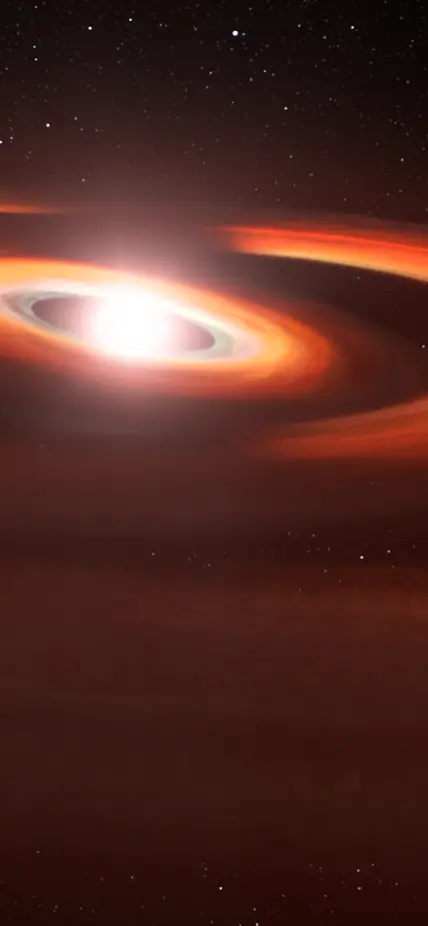Washington, DC—A team of astronomers, including Carnegie’s Alycia Weinberger, has found new evidence of a planetary construction site around the young star, TW Hydrae. Their work is published in The Astrophysical Journal.
Approximately 200 light-years away from Earth in the Hydra constellation, TW Hydrae is about 60 percent the mass of the Sun and about 10 million years old—young enough to be a good laboratory for studying the planet-formation process.
“Young stars like TW Hydrae are surrounded by rotating disks of gas and dust from which planets are born,” explained Weinberger, a staff scientist and Associate Division Director of Carnegie’s Earth and Planets Laboratory, who has been studying this system for many years. “Astronomers have thrown all our techniques and telescopes at TW Hydrae, because it’s so close to Earth and so tantalizing for what it can teach us about planet formation. Our new observations show that it never fails to surprise us.”
Previously, astronomers had detected a shadow sweeping across the disk material, like hands moving around a clock. A few years ago, they posited that this shadow is being cast by a tilted, thick inner disk revolving around the star.
Now, new images with the Hubble Space Telescope detect a second shadow. So, the system looks increasingly complicated with at least three nested disks slightly tilted relative to each other—perhaps proxies for unseen planets orbiting the star. Each planet is gravitationally pulling on material and warping what would have been a perfectly flat, pancake-shaped disk if no planets were present.
This is not a surprise because the planets in our own Solar System have orbital planes that vary in tilt by a few degrees from each other. As such, TW Hydrae gives astronomers a ringside seat to how Earth and its siblings may have looked during their formative years, some 4.6 billion years ago.
The second shadow was discovered in data from 2021 that was taken as part of a multi-year program designed to predict the position of a planet that could cause the tilted disk. When the new images were compared to older observations made by the Hubble Space Telescope, the researchers determined that there are two misaligned disks casting shadows. They were so close to each other in the earlier observation they were missed. Over time, they've separated and split into two shadows.
"We've never really seen this before on a protoplanetary disk. It makes the system much more complex than we originally thought," said lead author John Debes of the Space Telescope Science Institute and the Association of Universities for Research in Astronomy. "It does suggest that the two planets have to be fairly close to each other. If one was moving much faster than the other, this would have been noticed in earlier observations. It's like two race cars that are close to each other, but one slowly overtakes and laps the other," said Debes.
The suspected planets are located in a region roughly the distance of Jupiter from our Sun and the shadows complete one rotation around the star about every 15 years. They are inclined about five to seven degrees relative to the plane of the outer disk, which is comparable to the range of orbital inclinations inside our Solar System. The larger disk has a curious gap at twice Pluto's average distance from the Sun, possible evidence for a third planet in the system.
Any inner planets would be difficult to detect because their light would be lost in the glare of the star. Also, dust in the system would dim their reflected light. The European Space Agency's Gaia space observatory may be able to measure a wobble in the star if Jupiter-mass planets are tugging on it, but this would take years given the long orbital periods. Likewise, JWST’s infrared vision may also be able to show the shadows in more detail.
“In the 2030’s, direct imaging by the Giant Magellan Telescope, which is currently under construction at Carnegie’s Las Campanas Observatory in Chile, or other extremely large telescopes may be able to image planets so close to their stars,” Weinberger concluded.
Acknowledgments
The Hubble Space Telescope is a project of international cooperation between NASA and ESA. NASA's Goddard Space Flight Center in Greenbelt, Maryland, manages the telescope. The Space Telescope Science Institute (STScI) in Baltimore conducts Hubble science operations. STScI is operated for NASA by the Association of Universities for Research in Astronomy, in Washington, D.C.
